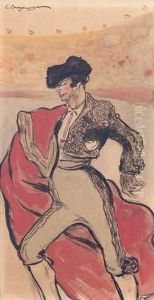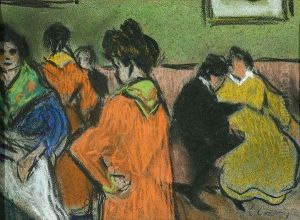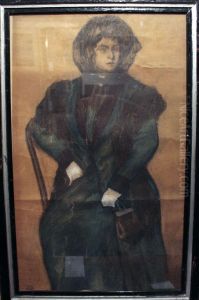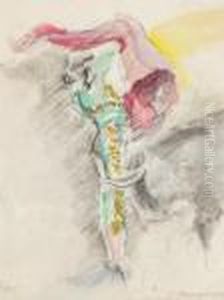Carlos Casagemas Paintings
Carlos Casagemas was a Spanish artist and poet, born in Barcelona on September 27, 1880. Although not as widely recognized as some of his contemporaries, Casagemas became posthumously notable for his close friendship with the renowned Spanish painter Pablo Picasso. His life and tragic end had a profound influence on Picasso's early work, especially during his Blue Period.
Casagemas was a part of the modernist movement in Barcelona and studied art at the Llotja School, where he met Picasso. The two became inseparable friends and collaborators, and in 1900, they moved to Paris together to engage with the city's vibrant artistic scene. It was an era of great creative ferment, with Paris being the epicenter of avant-garde art and literature. Casagemas was known for his delicate health and emotional instability, which impacted his personal relationships and artistic output.
Tragedy struck in 1901 when Casagemas, driven by unrequited love for a woman named Germaine Pichot, attempted to kill her and then turned the gun on himself, committing suicide at the age of 20 in Paris. This event deeply affected Picasso, who was only 19 at the time. The loss of his friend inspired a dramatic shift in his artistic style, leading to the creation of somber, monochromatic paintings that came to be known as his Blue Period. During this time, Picasso painted several posthumous portraits of Casagemas, imbuing them with a haunting melancholy that reflected his grief.
Casagemas' own artistic work includes a limited number of paintings and drawings, which are characterized by their impressionistic style and often feature scenes of Parisian life and portraits. Though his life was brief and turbulent, Carlos Casagemas left an indelible mark on the history of art, not only through his own creations but also through the profound impact he had on one of the most influential artists of the 20th century.




